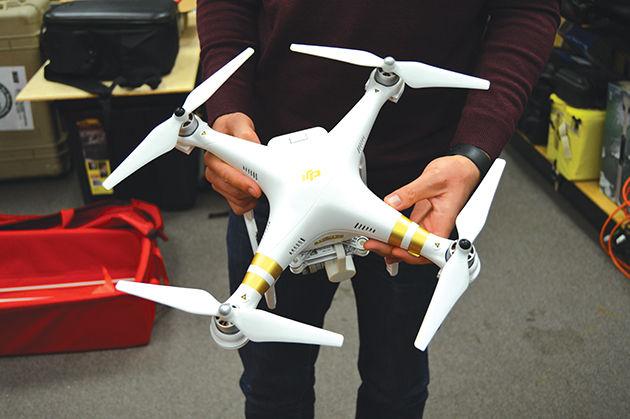For well over a decade, the A&M Center for Robot-Assisted Search and Rescue (CRASAR) has been using state-of-the-art robots to aid rescue workers in search and rescue operations.
The lab’s robots were deployed for the first time during the World Trade Center response, and have since assisted in numerous other recovery and restoration operations including hurricane Katrina and the Fukushima nuclear reactor meltdown.
Robin Murphy, head of CRASAR and computer science professor, has assisted in recovery operations for 26 disasters, and is part of ongoing collaborations between CRASAR and the Greek and Italian coast guards.
“Our job is to insert these technologies, to learn from the agencies how to best use them, do more research when we find gaps or problems,” Murphy said.
The Italian Coast Guard has used these robots to help refugees from Northern Africa get to Italy safely, according to Murphy.
“Some of these boats will hold 800 people, so when something goes wrong, you get significant deaths,” Murphy said. “The lifeguarding resources of the Coast Guard and the other agencies is pretty limited.”
On Jan. 28, CRASAR also participated in a training exercise with Brazos Search and Rescue. According to Grant Wilde, a computer science Ph.D. student at the lab, the exercise was designed to familiarize the different organizations there with the technology as well as test new features on some of CRASAR’s robots.
“EMILY, which stands for Emergency Integrated Lifesaving Lanyard, that, in combination with a sonar package, were used to see if they could possibly find any discrepancies in the water, or try to get into places where the manned boat could not,” Wilde said.
According to Wilde, EMILY can carry various payloads depending on what is needed, and there are different EMILY designs on the market right now. In fact, according to Jan Dufek, another Ph.D. student, the lab has been designing a “smart” EMILY.
“One of my teammates basically modified the EMILY to make it able to be autonomous,” Dufek said. “We added autopilot, GPS, telemetry radio, and that way we can control it from a computer. We can also use the autonomous waypoint navigation by putting waypoints to the map.”
According to Dufek, this smart EMILY can also navigate waterways on its own, and thus return home autonomously if told to do so. Dufek also implemented a way for EMILY to be led home by a UAV, which the team also used at the training exercise.
The UAV, according to Dufek, can also carry different payloads, and is used for navigating in tight spaces, like among trees.
“Basically, they get as close to the shore as they could, and then I flew the UAV to kind of see this area where they cannot get with their boat,” Dufek said.
While this was only a training exercise, CRASAR has deployed recently to an actual disaster, according to Wilde.
With so many rescue operations involving robots now, it may seem that robots like EMILY are doing all the work, however, that is not CRASAR’s goal.
“We are not trying to replace first responders,” Wilde said. “We are there to assist first responders.”
Automated rescue
February 6, 2017
Photo by Photo by Aimée Rodriguez
CRASAR develops technology to aid first responders, lower human intervention risk.
0
Donate to The Battalion
$1815
$5000
Contributed
Our Goal
Your donation will support the student journalists of Texas A&M University - College Station. Your contribution will allow us to purchase equipment and cover our annual website hosting costs, in addition to paying freelance staffers for their work, travel costs for coverage and more!
More to Discover










